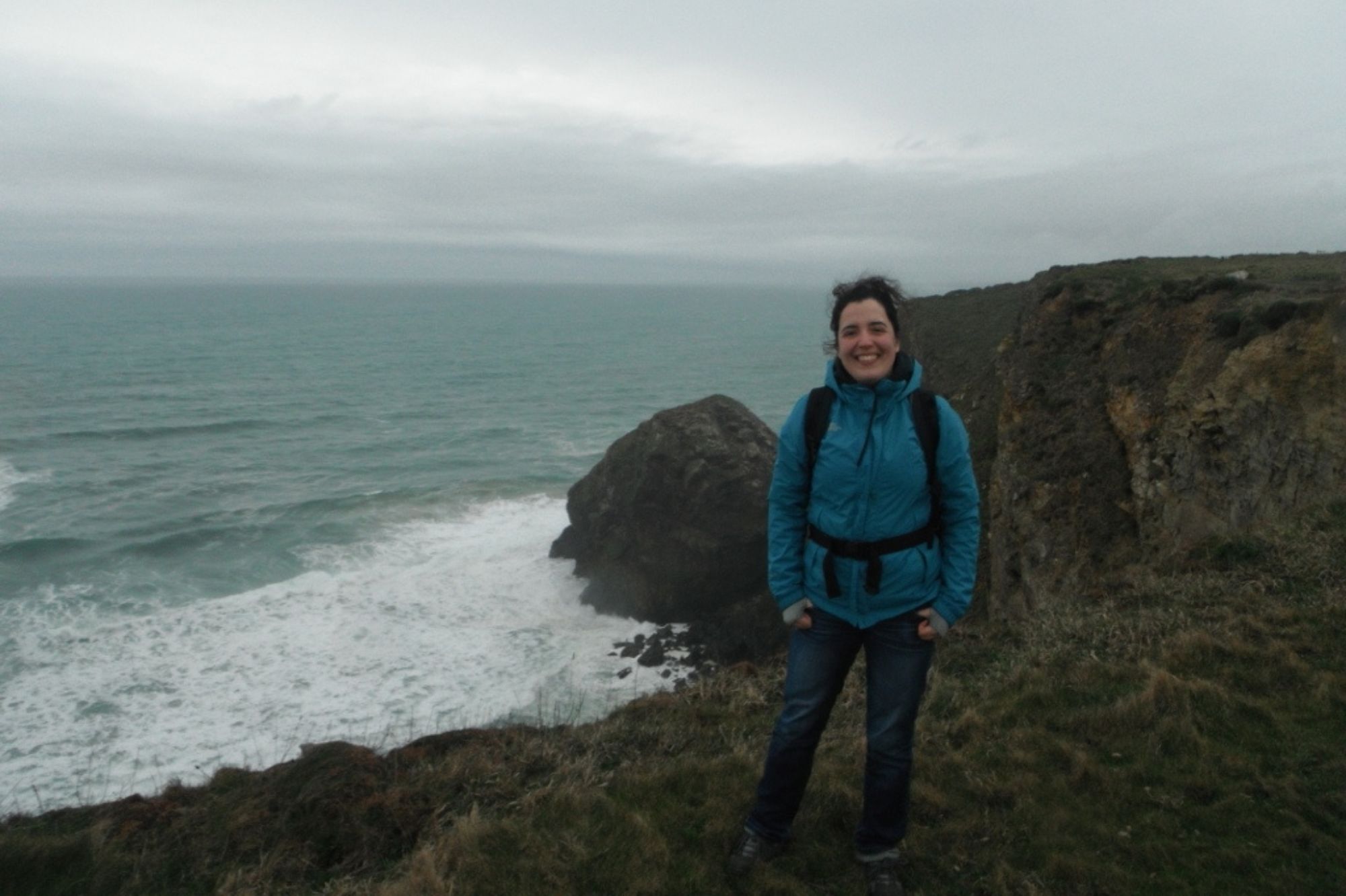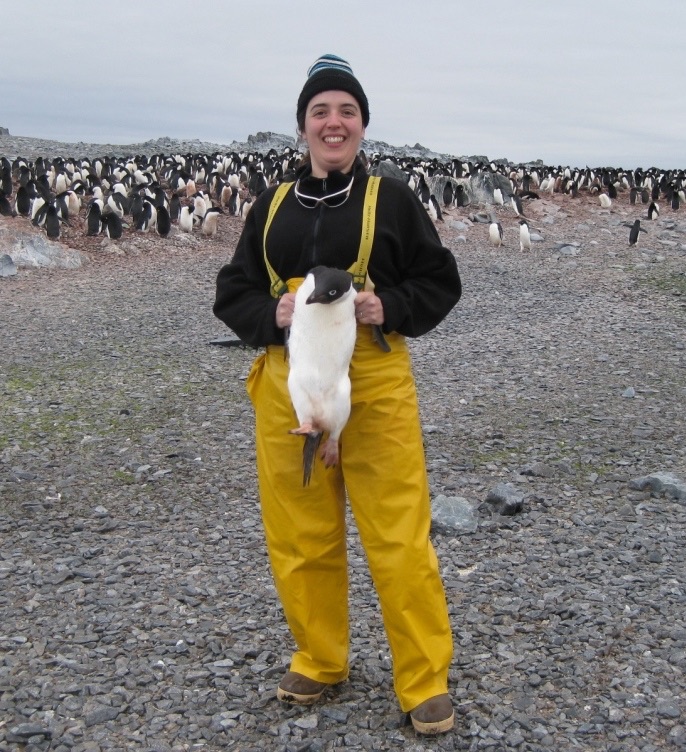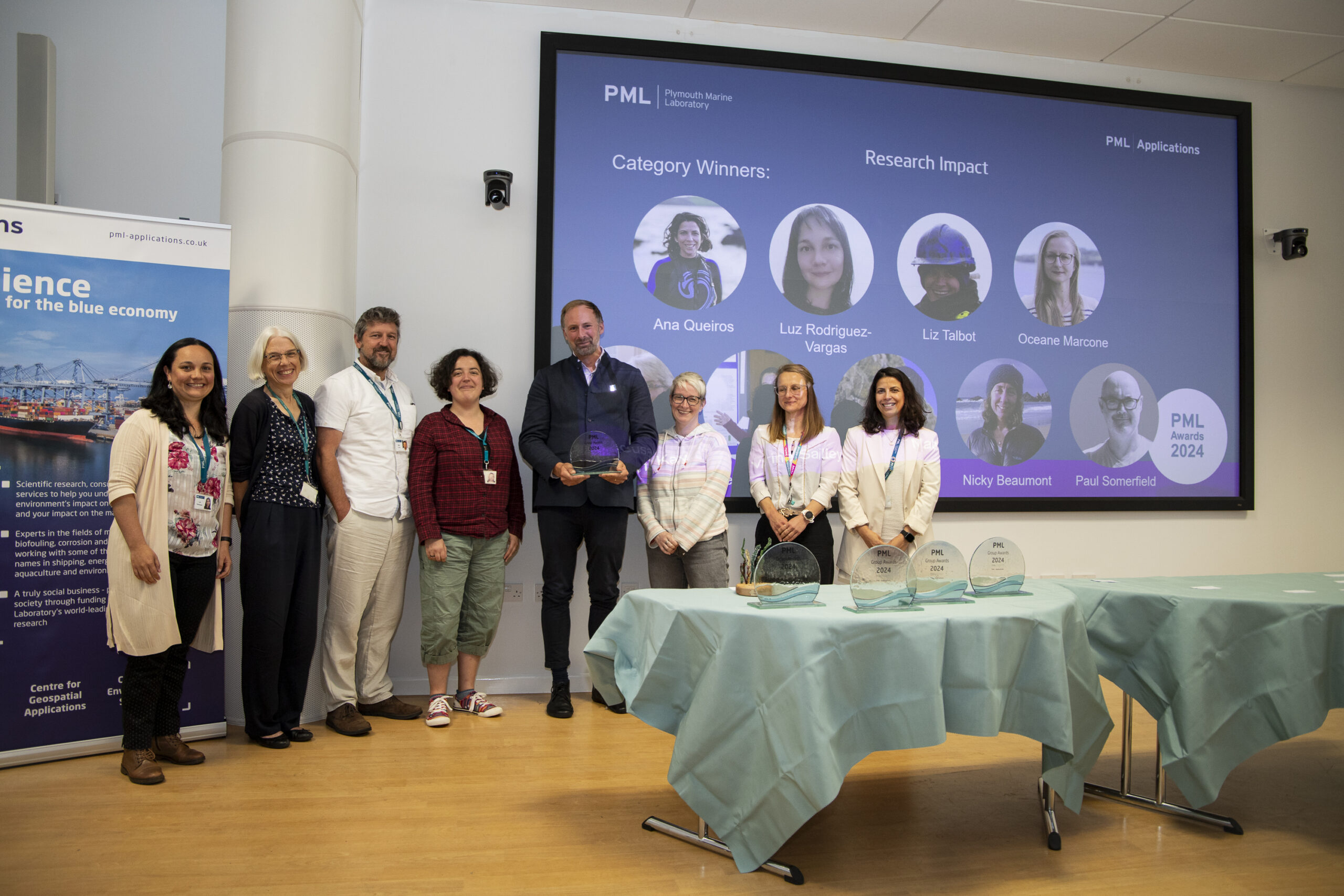Story
Staff spotlight: Dr Sevrine Sailley - Ecosystem modeller
28 February 2025
Meet Dr Sevrine Sailley, who uses computer models to estimate how marine ecosystems may change in the future, to help society make more informed decisions in the now. From estimating future fish biomass under a changing climate, to investigating whether anticipated changing currents may affect the migration of sea turtles… find out more about Dr Sailley’s work to shape a better future for us all.

Dr Sevrine Sailley joined our Marine Systems Modelling group at the laboratory in 2013, and her work during this time has focused largely on the representation of zooplankton in ecosystem models, marine food web dynamics, and polar science.
She describes her childhood and early experiences that influenced her path into the world of environmental, and more specifically, marine science.
“Growing up, I had a love for all things nature and animals. In terms of career options – that I was aware of – being a veterinarian seemed to be the right option. To become a vet in France, you need to get admitted in a special school through a national exam. My planned path for that was to get a biology degree, however I failed the entrance exam, but by then I had discovered science and research as a career option. And this gave me the chance to combine my love of nature with my passion for exploring new knowledge and investigating the link between different processes, organisms, ecosystem states.”
“Multiple summer holidays spent snorkeling had me leaning toward marine ecology for my Master’s degree. Modelling became an option during one module where I found something that let me focus on small details within the bigger pictures and investigate those linkages I found so fascinating.”
Sevrine went to Université de Bretagne Sud (UBS, Lorient) to complete a degree in Biology, then completed her Master’s degree in Marine Ecology at Institut Universitaire Européen de le Mer (IUEM, Plouzané).
She began her PhD in 2005, which was focused on microzooplankton grazing and growth rate, as well as their representation in a global ecosystem model, and was hosted by both the Alfred Wegener Institute (AWI, Germany) as well as University of East Anglia (UEA, UK).
She describes how she came to choose her PhD.
“To be honest I didn’t have a clear idea of what to do for my PhD, so I decided to find a subject that I found exciting. The PhD project that I chose offered me a chance to do the things I liked (investigating linkages, new knowledge and the newly found modelling aspect). The PhD was mainly hosted by AWI so I spent most of my time in Germany, but for 10 months in the UK for the modelling part of it.”
“Interestingly I was based at the British Antarctic Survey, with trips to UEA for catch up with Corinne Le Quéré who was my UK supervisor. It gave me a chance to learn about different sides of academia, but also different cultures. Everything is a bit of a blur now, but mostly it was exciting!”

Image caption: A photo following Sevrine’s PhD defense after it was announced she had passed, she said: “I’m wearing a graduation hat made by my fellow PhD students that uses elements from my thesis and stuff I like. It’s a tradition there.”
In 2009, Sevrine’s career journey took her across the pond, when she joined Woods Hole Oceanographic Institute (WHOI) in the United States for a Postdoctoral researcher position. She describes the significant transition:
“WHOI was very different from AWI. I was warned that the academic environment in the US can be very competitive and harsh, but I found a supportive and friendly environment. I guess I was lucky with the people I worked with, and the fact WHOI nurtures its post-docs to grow them into excellent scientists.”
“Also, it’s worth mentioning that Woods Hole has 3 research institutes: WHOI, the MBL (Marine Biological Laboratory) and a NOAA lab. So, there’s a lot of scientists and it’s very international, which I think is an excellent recipe for a great environment as a whole.”
“I have a couple of special memories from my time at WHOI: the friendly softball tournament between the different department and lab in summer (I had never played softball or baseball before, but it didn’t matter – it was all good fun and a nice bonding experience). And most importantly, getting to go to Antarctica for a research cruise as part of my Post-doc work! It was a wonderful experience, and it was great to see in-person what I had spent the last couple of years modelling.”

Image caption: Sevrine in Antarctica as part of a research cruise with WHOI, she says “it was great to see in-person what I had spent the last couple of year‘s modelling.“
One area of focus at WHOI for Sevrine was looking at long-term trends in the Southern Ocean food web, using Palmer time-series and inverse model technique. And, in 2013, she led and published a study into carbon fluxes and pelagic ecosystem dynamics near two western Antarctic Peninsula Adélie penguin colonies.

Image caption: Sevrine pictured helping to tag Adelie penguins in Antarctica as part of fieldwork with WHOI. She said: “Because of the Antarctic treaty, you’re not supposed to interact with the native wildlife at all, however we were tagging penguins for research and to support conservation and had a special permit for this work. This is how you hold penguins; they wiggle a lot!”
Sevrine completed her postdoc in 2013, and that’s when she joined PML. She describes what she enjoys about working here, and some personal highlights.
“Time flies! I enjoy the variety of science I come across within PML and how the lab is not so big you don’t know people (AWI and WHOI were so huge that you might never meet over half of the people there). It helps in creating transdisciplinary science which speaks to me and my love of zooming out to the bigger picture to look at all the possible links. It also moved my work subject in an interesting direction, from zooplankton, to fish, and now marine charismatic species. I’m loving the variety!”
“A personal highlight would be getting my first PI project funded looking at predicting jellyfish ingress, the project is long finished, but the work I’ve done gets brought up every now and again for possible follow-up or new work with slightly different angles.”
Find out more: Jellyfish and Seaweed Surveillance (JaSS) project >>
“A special moment might well be last year when the work I was taking part in for the project MSPACE got nominated for a PML Science Award. It was a team award, but it was nice and lovely to see the work we’d done as a team recognized, Ana Queiros our team and project leader really deserved it.”

Image caption: PML Research Impact Award winners – the Climate-Smart Marine Spatial Planning team. From left to right: Luz Rodriguez-Vargas, Susan Kay, Matt Frost, Sevrine Sailey, Dan Crockett (PML Trustee), Liz Talbot, Océane Marcone, Ana Queirós.
More recently, it was announced that Sevrine had been appointed as the new Chair of the International Council for the Exploration of the Sea (ICES) Working Group on Integrative, Physical-biological and Ecosystem Modelling (WGIPEM).
ICES is the world’s oldest intergovernmental science organization, providing impartial evidence on the state and sustainable use of our seas and oceans, and the organisation represents a network of nearly 6000 scientists from over 700 marine institutes, in 20 member countries.
WGIPEM was set up to advance coupled physical-biological and ecosystem modelling. The Working Group carries out its modelling work by sharing and discussing simulation results, identifying gaps in knowledge in these modelling activities, and recommending and performing activities to improve model performance.
An important part of the work is the continued development of end-to-end ecosystem models that incorporate ecological, economic, and social science. The group forms an important link between the biophysical modelling community, that produces estimates of ecosystem components, and the managers charged with giving advice on the status of those systems and their resources.
Sevrine commented on the news at the time:
“I’m thrilled to take on this position and carry on the work that goes on in the WGIPEM. This group is focusing on ongoing and new development and uses of ecosystem models, with great members. The group meeting is always a nice event, and I hope to do justice to what the past chairs have achieved.”
Sevrine describes some of her current work.
“I have a paper that has just been accepted; looking at the impact of climate change on European fisheries. It has been in the pipeline for about 4 years now, but it’s a great piece of work with multiple scientists, and I was trying to push the boundaries of how fish modelling is shared with this paper, so I hope it gets picked up by the scientific community.”
“I’m also looking to continue my work in modelling turtle populations, and their response to climate change. I’ve developed a model and it combines different bits of modelling techniques. I won’t bore you with the details, but it’s been challenging and fulfilling to develop this, and I hope I can put it to good use towards sea turtle conservation.”
To conclude the interview, we asked Sevrine whether she feels as if the modelling field is underrepresented by women, and if so, what she would say to women considering pursuing a role in this field.
“If you’d asked me that question 6 or 8 years ago, I’d have said yes, but things are changing and we’re moving toward it being more gender balanced. It also depends on the modelling field, ocean physics modelling is still mainly male, but fishery modelling is biased toward woman representation, at least in my experience.”
“To any women wanting to go into modelling (or science) I say “Do it, don’t listen to the nay sayers, find yourself a mentor that will support you and/or a woman role model in the field you want to pursue so you have someone who believes in you and a proof it can be done.”